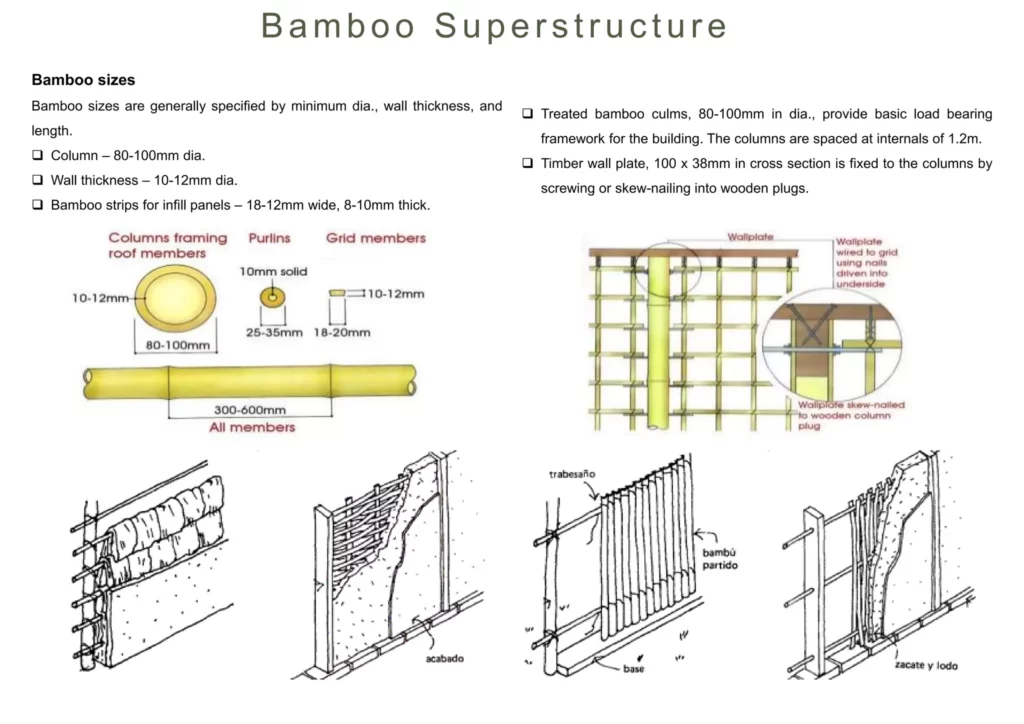The quest for sustainability in construction has led to the evolution of eco-friendly building materials. This blog highlights the most popular sustainable building materials that are revolutionizing the industry today.
Top Sustainable Building Materials
Bamboo Construction
Bamboo is celebrated for its robustness and flexibility. It grows rapidly, making it a renewable resource ideal for eco-friendly construction. Its resilience against environmental factors adds to its desirability in sustainable building.

Image Source: SlideShare
Recycled Steel
Recycled steel significantly lowers the environmental toll of mining and processing, providing a strong and sustainable alternative. It’s an excellent choice for structural support in eco-conscious building designs.

Image: Recycled Steel in Construction
Reclaimed Wood
Utilizing reclaimed wood helps combat deforestation and brings a unique, rustic aesthetic to construction. It’s a responsible choice that blends environmental care with distinctive style.
Rammed Earth
This ancient construction method, seeing a revival, is known for its excellent thermal properties and unique natural appearance. It involves compacting earth to create solid, thermally efficient walls.

Image Source: Rammed Earth Construction
Cork Flooring
Cork, derived from the bark of cork oak trees, is a sustainable, renewable resource. It offers comfort underfoot, durability, and contributes to a lower carbon footprint, making it a popular eco-friendly flooring option.

Image Source: Cork flooring
Hempcrete
Hempcrete, a blend of hemp fibers and lime, is a sustainable building material praised for its light weight and insulating properties. It’s an excellent choice for eco-friendly construction, particularly in wall systems.

Image Source: Hempcrete
Solar Panels
Incorporating solar panels in building designs enhances energy efficiency and reduces reliance on fossil fuels. They are a key element in sustainable construction, contributing to reduced carbon emissions.
Insulated Concrete Forms (ICFs)
ICFs offer superior insulation, leading to significant energy savings in buildings. They consist of concrete forms that are left in place to provide continuous insulation and soundproofing.

Image Source: Insulated Concrete Forms
Green Roofing
Green roofs, covered with vegetation, are visually appealing and offer numerous environmental benefits. They improve air quality, provide natural insulation, and enhance the sustainability of buildings.
This table provides a quick overview of the materials, their unique features, and how they contribute to sustainability in construction.
| Material | Features | Sustainability Factor |
|---|---|---|
| Bamboo | Strong, flexible, fast-growing | Renewable, low environmental impact |
| Recycled Steel | Durable, sturdy | Reduces mining and manufacturing impact |
| Reclaimed Wood | Unique aesthetic | Reduces deforestation, reuses existing wood |
| Rammed Earth | Natural look, excellent insulation | Lowers energy costs, uses local materials |
| Cork Flooring | Comfortable, durable | Renewable, biodegradable |
| Hempcrete | Lightweight, insulating | Carbon-negative, renewable |
| Solar Panels | Energy-efficient | Reduces carbon emissions |
| Insulated Concrete Forms (ICFs) | Superior insulation | Reduces energy consumption in buildings |
| Green Roofing | Aesthetic, improves air quality | Insulates buildings, supports biodiversity |
Frequently Asked Questions
Question: How does BIM 2024 support sustainable building practices?
Answer: BIM 2024 enhances efficient workflows and accurate planning in using sustainable materials, minimizing waste and maximizing efficiency.
Question: Can sustainable building materials reduce construction costs?
Answer: Yes, many sustainable materials are cost-effective in the long term due to their durability and energy efficiency.
Question: Are sustainable building materials compatible with modern design software?
Answer: Absolutely. Modern design software easily integrates these materials into construction plans, as discussed in Design Software and Sustainability.
Question: What are some practical tips for incorporating sustainable materials in construction?
Answer: Research material properties, consider local availability, and consult with experts on sustainable construction.
Question: Can sustainable materials be used in all types of construction projects?
Answer: Yes, there’s a wide range of sustainable materials suitable for various project types, from residential to commercial.
Conclusion
Sustainable building materials are key to creating environmentally friendly and energy-efficient structures. Embracing these materials is not only beneficial for the planet but also cost-effective in the long run. For more insights into sustainable construction, visit Pinnacle IIT Blogs and explore further at Pinnacle IIT.

